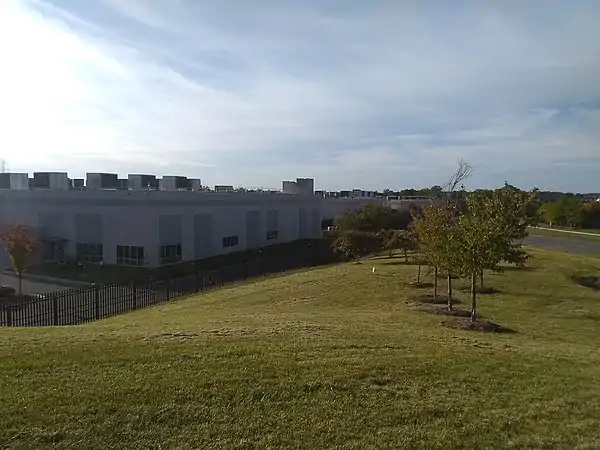< History of video games < Cloud
History
Amazon Luna was announced in late September 2020.[1]
Early access to the Amazon Luna service began on October 20th, 2020.[2]
The business model Luna uses appears to be a monthly fee for access to a library of games.[3]
Technology
At launch Luna is intended to run on AWS EC2 G4 instances using Intel Cascade Lake CPUs, T4 GPUs made by NVIDIA, and a Windows operating system.[4][5] Luna instances are expected to have about 8.1 teraflops of performance.[5]
Gallery
 An AWS datacenter in Ashburn, Virginia in late 2020.
An AWS datacenter in Ashburn, Virginia in late 2020. Amazon Spheres, part of the Amazon headquarters in Seattle, Washington in 2018.
Amazon Spheres, part of the Amazon headquarters in Seattle, Washington in 2018.
References
- ↑ McWhertor, Michael (24 September 2020). "Amazon unveils new cloud gaming service Luna" (in en). https://www.polygon.com/2020/9/24/21454568/amazon-luna-cloud-gaming-service-channels-price-release-date. Retrieved 3 November 2020.
- ↑ "Amazon Luna early access begins today" (in en). 20 October 2020. https://blog.aboutamazon.com/devices/amazon-luna-early-access-begins-today. Retrieved 30 October 2020.
- ↑ Schoon, Ben (2 November 2020). "Amazon Luna hands on: Rough around the edges". https://9to5google.com/2020/11/02/amazon-luna-hands-on/. Retrieved 5 November 2020.
- ↑ "6 Things to Know About Amazon's Luna Cloud Gaming Service". https://www.fool.com/investing/2020/09/30/things-know-about-amazon-luna-cloud-gaming-service/.
- 1 2 "Amazon’s Luna game streaming service is powered by Windows and Nvidia GPUs". https://www.theverge.com/2020/9/25/21455610/amazon-luna-game-streaming-windows-nvidia-gpu-servers.
This article is issued from Wikibooks. The text is licensed under Creative Commons - Attribution - Sharealike. Additional terms may apply for the media files.